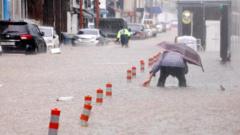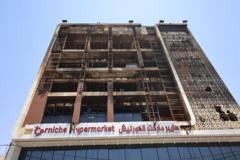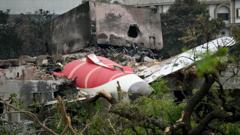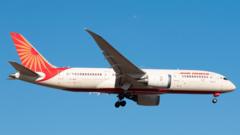In a tragic incident, salvage crews are currently working to recover the remains of an American Airlines flight and an Army helicopter that collided over the Potomac River, claiming the lives of all aboard.
Salvage Operation Underway Following Fatal Plane Crash over Potomac River

Salvage Operation Underway Following Fatal Plane Crash over Potomac River
Recovery teams commence three-day operation to retrieve wreckage from American Airlines jet and U.S. Army helicopter collision.
Crews have begun removing the wreckage of American Airlines Flight 5342 from the Potomac River in Washington, D.C., following a devastating collision with a U.S. Army helicopter last week. The salvage operation commenced on Monday morning, and officials expect it will take approximately three days to complete.
The first piece of wreckage lifted just after 10 a.m. Eastern time was believed to be one of the jet's engines, removed by a crane positioned on a barge in the river. Boats and crew had started assembling as early as 8 a.m. Col. Francis Pera of the Army Corps of Engineers indicated that the ongoing recovery efforts may uncover some of the tragic remains of approximately 67 individuals who lost their lives, including the 64 passengers on the jet and three on the helicopter.
As of Sunday afternoon, recovery teams have successfully located and identified the remains of 55 victims. The efforts continue in the frigid and murky waters of the Potomac as salvage operations aim to bring closure to the grieving families. Once pulled from the water, the wreckage will be transported for further investigation into the unexpected crash, which occurred amidst clear weather conditions as the jet was preparing to land at Ronald Reagan National Airport.
The collision, now considered the deadliest in the United States in two decades, has triggered discussions about air traffic safety and the staffing levels at one of the nation's busiest airports. While the investigation continues, federal authorities have refrained from speculating about the accident's underlying causes at this time.
Amidst this recovery effort, the importance of addressing aviation safety concerns has been underscored, emphasizing the need for enhanced protocols in potentially congested airspaces.
The first piece of wreckage lifted just after 10 a.m. Eastern time was believed to be one of the jet's engines, removed by a crane positioned on a barge in the river. Boats and crew had started assembling as early as 8 a.m. Col. Francis Pera of the Army Corps of Engineers indicated that the ongoing recovery efforts may uncover some of the tragic remains of approximately 67 individuals who lost their lives, including the 64 passengers on the jet and three on the helicopter.
As of Sunday afternoon, recovery teams have successfully located and identified the remains of 55 victims. The efforts continue in the frigid and murky waters of the Potomac as salvage operations aim to bring closure to the grieving families. Once pulled from the water, the wreckage will be transported for further investigation into the unexpected crash, which occurred amidst clear weather conditions as the jet was preparing to land at Ronald Reagan National Airport.
The collision, now considered the deadliest in the United States in two decades, has triggered discussions about air traffic safety and the staffing levels at one of the nation's busiest airports. While the investigation continues, federal authorities have refrained from speculating about the accident's underlying causes at this time.
Amidst this recovery effort, the importance of addressing aviation safety concerns has been underscored, emphasizing the need for enhanced protocols in potentially congested airspaces.























